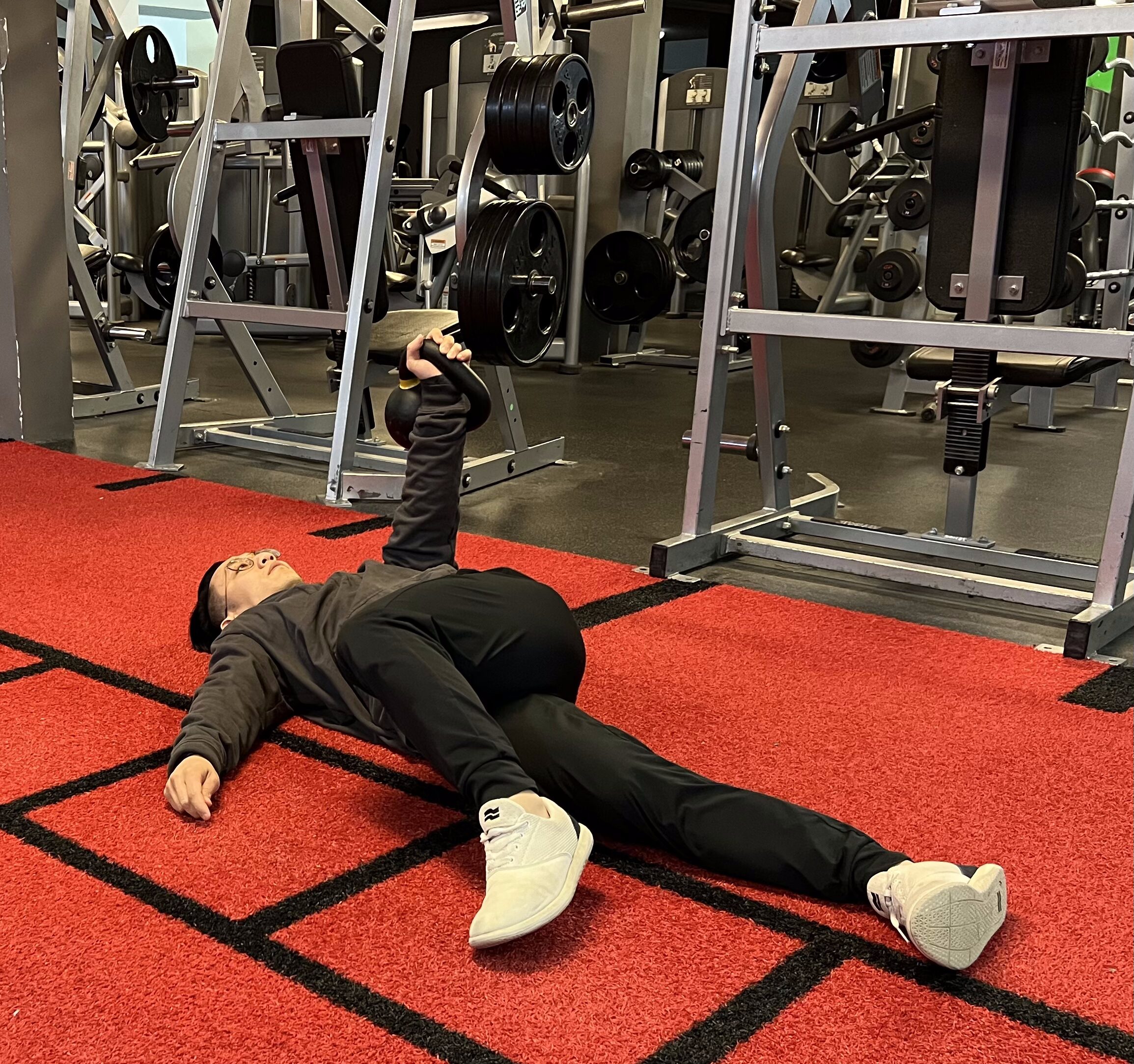May 12, 2021
Avoid Stress-Related Injuries this Summer
Who doesn’t love a good morning run through the forest? Or perhaps a beautiful summer hike with family and friends. On rare occasions, fewer things are more cathartic than floating on a lake or through a river in a kayak, soaking up the sun and inhaling the freshest of fresh air. While used mostly as a recreational tool or a means to enjoy nature, cardio training is more dangerous than we may expect. As spring warms up and taunts us with characteristics of summer, we expectantly observe an increase in outdoor activity. With this increase in outdoor activity, we see an unfortunate correlation with stress-related injuries such as plantar fasciitis, IT-Band syndrome, and shin splints, to name a few.
According to their “2019 Outdoor Participation Report,” the Outdoor Industry Association found that the most common outdoor activity among participants is running, jogging, and trail running as one category. Given the accessibility of the activity, it’s easy to see why 1 in 5 American outdoor activity participants choose running. I mean, all you need is a pair of shoes, some good music, and some cooperative weather to get a good workout. Unfortunately, the consensus is that 80% of running injuries are stress-related injuries as opposed to more dramatic “acute injuries,” although they can also certainly happen. Most stress-related injuries are the result of faulty loading patterns or muscle imbalances. The work that we do with resistance training can improve movement efficiency and reduce the risk of injury for participants.
The following is a “movement-based” warm-up, including a functional strength circuit that you can use alongside your cardio training to optimize performance and reduce injury risk. Although these are simply a sampling of exercises that can help, there are plenty of other exercises that you could use in their stead. Best practice dictates that a progressive warm-up should fulfill certain criteria: manual tissue manipulation (foam rolling), active stretching, activation exercises, and integrative movements. This framework prepares the muscles and joints for more intense work and optimizes communication between the body and the brain, which reduces the risk of stress-related injuries.
Here is a pre-workout routine for cardio training and other ankle-intensive activities like running, jogging, trail running, hiking, and athletic training.
Step 1: Foam Roll the Upper Back and the Quadriceps (Inhibit)


Too many people suffer from one of two major “postural distortions;” upper cross or lower cross syndrome. These postural distortions manifest due to faulty movement patterns or extended lengths of time spent in a particular position (like sitting or wearing a backpack all day). Using a foam roller on the T-Spine and Quadriceps, we can begin to improve the flexibility and mobility of the hips and shoulders, which are both important joints when considering running techniques. Scrub through these muscles for about 30-60 seconds each (60 seconds if you notice a lot of stiffness) to enhance proprioceptive qualities (mind-muscle connection) and blood flow. If there is a lot of pain and stiffness, or if you feel it’s impossible to relax, consider taking a recovery day to focus on resting the muscle tissue.
Step 2: Stretch the Hip Flexors (Lengthen)

Some of the common complaints around running include low back pain and knee pain. There are fewer things more annoying than a nagging knee ache when you begin your cardio journey. At first thought, you might think things will feel better when you warm up – that you’ll “shake it off.” By stretching the hip flexors during our warm-up, we can avoid a host of discomforts during the workout itself. When we stretch the hip flexors (of course, foam rolling the quads beforehand), we optimize what we call the “length-tension relationship” at the joint. A balanced length-tension relationship allows the muscles to work together efficiently while also reducing the risk of stress-related injuries. If one or two muscles are out of balance at the hips, faulty loading patterns at the knees and ankles are predictable. If you go for a 5 km run, that can be anywhere between 4,000 to 5,000 faulty reps; a certain recipe for injury.
Step 3: Hip Drop Glute Bridge (Activate)
This variation of the hip bridge and leg drop is great for getting in tune with how your hips are balanced. There are plenty of factors that influence an inefficient gait (pronation through the ankle, hip hikes, overactive hamstrings, etc.), many of which can be found and improved with this exercise. Notice that there are two variations here: the first variation is from a position where the feet are planted then raised. The second variation begins with the knees positioned over the hips, then dropped toward the ground while adding a “stomping” action to extend the hips. The stomp creates a single-leg bridge position but also simulates the stomping nature of running. This allows for an “impact-based” stabilization from the muscles affecting the lumbopelvic hip complex and the ankles while synchronizing the nervous and musculoskeletal systems.
This variation of the hip bridge and leg drop is great for getting in tune with how your hips are balanced. There are plenty of factors that influence an inefficient gait (pronation through the ankle, hip hikes, overactive hamstrings, etc.), many of which can be found and improved with this exercise. Notice that there are two variations here: the first variation is from a position where the feet are planted then raised. The second variation begins with the knees positioned over the hips, then dropped toward the ground while adding a “stomping” action to extend the hips. The stomp creates a single-leg bridge position but also simulates the stomping nature of running. This allows for an “impact-based” stabilization from the muscles affecting the lumbopelvic hip complex and the ankles while synchronizing the nervous and musculoskeletal systems.
As mentioned above, cardio training can be mindless at times. Simply using a jog through the forest or a bike ride through town to reduce brain activity is a great way to reduce stress. But if movement mechanics suffer as a result of relaxing the brain, greater imbalances could be developing. The hip drop glute bridge offers an opportunity to become more aware of how your body activates before cardio training, especially through the lower body.
Step 4: Banded Step-Up (Integrate)
In the movement preparation section of the warm-up, any variation of a step-up provides ample opportunity to assess and improve the function of the hips, knees, and ankles cohesively. When the heel strikes the ground during gait, an optimal recruitment pattern carries tension throughout the whole leg. If that alignment is skewed early in the workout, it can cause pain and discomfort throughout the whole leg by the end of the workout, which is an obviously unwelcome outcome.
The banded step-up variation above challenges the balance of the planted leg, the flexion strength of the leg being driven into the air, and the rotational stability of the hips all at once. I like to use this variation to improve performance markers for my athletes, such as vertical jumps, horizontal jumps, and top speed intervals. This exercise can give you more control for the everyday cardio warrior when turning corners, climbing up hills, and softening footfalls, all components that reduce the risk of injury and enhance functional efficiency.
Functional Ankle Strength Circuit
There are many ways to use a functional strength circuit to enhance cardio performance. I picked 5 exercises specifically to increase running performance. The 5 exercises are the Sled Push, a Double Rack Carry March, TRX Pikes or Crunches, Kettlebell Swings, and Bag Shoulder Throws (you can see an example of each exercise in the video below).
1.) Sled Push 30-40 yards.
Everyone loves (or loves to hate) the sled push for obvious reasons: IT’s INTENSE! The benefit of the sled push is elevating the intensity of the workout instantly, which will give the body a taste of its anaerobic energy systems: the energy system responsible for developing cardio strength. The other benefits, of course, are training the legs in a gait-like manor while conditioning the upper body to maintain its postural stability.
2.) Double Rack Carry March 30-60 seconds alternating (1-3 second pause each rep).
The Rack Carry March may be new for you, but I can assure you it will take the balance training observed in the banded step-up to a higher intensity. Coming off the heels of the sled push, the racked kettlebells provide added resistance to the muscles used for inspiration when breathing (diaphragm and intercostals), making recovery more challenging. Using a heavy enough weight, you will experience how small, subtle movements can dramatically affect balance in the marching movement.
3.) TRX Pikes/TRX Crunches 10-20 reps of either or both.
These anterior chain dominant core movements are great by themselves. They’ve been added to this particular workout to integrate knee and shoulder stability with hip movement. The key to success on the TRX Pikes is to keep the ankles dorsiflexed, the knees extended, and shoulders depressed.
4.) Kettlebell Swings 15-30 reps.
Kettlebell Swings and the TRX core work moves above fit together as if two pieces to a puzzle. The Kettlebell Swing works the entire back of the body while conditioning the plantar fascia uniquely. The pendulum-like trajectory of the kettlebell forces the plantar fascia to remain active while absorbing the weight of the kettlebell and firing it back in the opposite direction. Once again, the glutes will work to explosively drive the hips into extension, simulating an increase of speed or sprint when running.
5.) Bag Shoulder Throws 30-60 seconds.
This final movement is the most technically challenging. The Shoulder Throw uses all three planes of motion (sagittal, frontal, and transverse) and requires the entire body to work together to move smoothly. At the end of each shift, the hip, knee, and ankle should be positioned over one another, and the feet should be actively gripping the floor. With the bag on the shoulder, the spine becomes loaded, which will require more extension from the muscles of the spine. This unique postural load can do one of two things: strengthen thoracic extension or crush the individual into more rounding of the upper back. The former is ideal; however, the latter illuminates a need for more postural training; both are valuable if used correctly.
Sample Workout (Weight Room)
Repeat 2-5 sets of this circuit or until the entire body feels warm and coordinated
Sled Push – 30 to 40 yards
Double Rack Carry March – 30-60 seconds alternating legs (1-3 second pause for each rep)
TRX Core Exercise – 10-20 reps of either or both Pike and Crunch
Kettlebell Swings – 15-30 reps
Bag Shoulder Throws – 30-60 seconds
If you plan on going for a run from home, use the same corrective techniques above as they don`t require any equipment. For your strength circuit, use this bodyweight workout to prepare your body for a strong, stable, and safe cardio workout.
Sample Workout (Bodyweight)
Repeat 2-5 sets of this circuit or until the entire body feels warm and coordinated.
Air Squats – 15 to 30 reps
Alternating Side Lunges – 10 to 20 reps each
Reverse Lunge to Knee Drive – 10 to 20 reps reach
Slow Twisting Mountain Climbers – 20 to 50 reps total
Alternating March with Thoracic Twist – 30 to 60 total
Give this routine a try before your next cardio session, and don’t be surprised if you feel more power and less pain during and after your workout. This style of pre-workout routine also has benefits in strength and power training programs. Summer is the season known for outdoor activities. Ensure enjoyment all season long by intentionally strengthening your weaknesses in your warm-ups.
Tags:
Related Posts
We’re here to help you!
Questions, comments or want to register? Fill out the form below and we will contact you shortly. Thanks!
"*" indicates required fields



